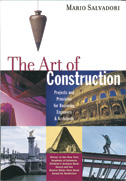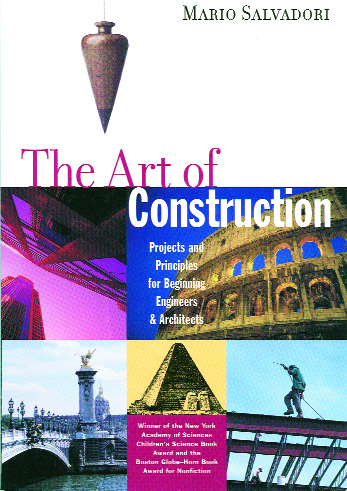Mario Salvadori
Most watershapers know that the work we do requires knowledge across a wide range of disciplines -- a cluster of skills that includes, among others, geology, materials science, structural engineering, construction techniques, hydraulics, architecture, art history, color
Most watershapers know that the work we do requires knowledge across a wide range of disciplines - a cluster of skills that includes, among others, geology, materials science, structural engineering, construction techniques, hydraulics, architecture, art history, color theory, drafting and more. As jacks of all trades, we don't really need to be "expert" on all of these fronts, but without a working knowledge of the technical and aesthetic disciplines involved in creating quality work, it's difficult to ensure the success of any given project. There's no question that some of us are better at certain disciplines than others, and it's up to us to recognize our strengths and weaknesses and fill in the gaps of our understanding as best we can. When it comes to structural engineering, for example, few of us qualify as bona fide engineers: That takes years of schooling and rigorous licensing processes. But almost all of us work with precise structural designs that are specific to the vessels and associated structures we design and/or build. In other words, we may not be engineers, but we sure as heck need to
Most watershapers know that the work we do requires knowledge across a wide range of disciplines - a cluster of skills that includes, among others, geology, materials science, structural engineering, construction techniques, hydraulics, architecture, art history, color theory, drafting and more. As jacks of all trades, we don't really need to be "expert" on all of these fronts, but without a working knowledge of the technical and aesthetic disciplines involved in creating quality work, it's difficult to ensure the success of any given project. There's no question that some of us are better at certain disciplines than others, and it's up to us to recognize our strengths and weaknesses and fill in the gaps of our understanding as best we can. When it comes to structural engineering, for example, few of us qualify as bona fide engineers: That takes years of schooling and rigorous licensing processes. But almost all of us work with precise structural designs that are specific to the vessels and associated structures we design and/or build. In other words, we may not be engineers, but we sure as heck need to















2011/4.1, April 13 — Pond Liners, Rainwater Capturing, Book Notes and more